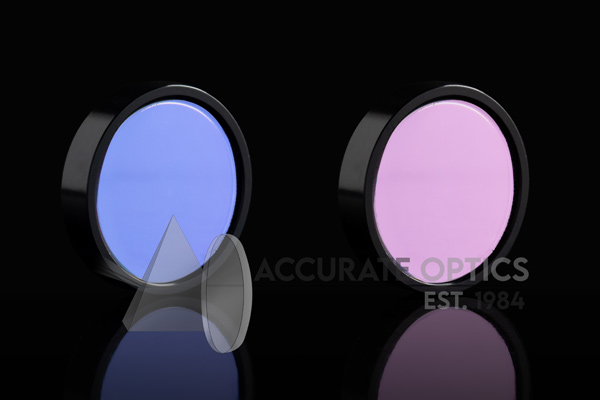How Do Optical Diffusers Work?
Have you ever wondered how photographers achieve those soft, dreamy portraits or how your favorite display technology ensures consistent brightness and color? The answer lies in the fascinating world of optical diffusers! These ingenious devices hold the key to transforming harsh, direct light into soft, even illumination. In this user-friendly blog, we’ll take you on a journey to demystify the magic behind optical diffusers and explain how they work their wonders.
1. What is an Optical Diffuser?
Before diving into the mechanics, let’s understand the basics. An optical diffuser is a specialized component that scatters light uniformly in multiple directions. Unlike direct light sources, which can cause harsh shadows and glare, diffusers soften the light, creating a pleasing and visually appealing illumination.
2. Scattering Light for Softness:
The secret behind how optical diffusers work lies in the way they scatter light. When light passes through the diffuser material, it encounters tiny irregularities or structures on its surface. These imperfections cause the light to change direction multiple times, effectively scattering it in different angles.
3. The Role of Material and Structure:
The material and structure of the diffuser play a vital role in determining its light scattering properties. Different types of optical diffusers, such as ground glass diffusers, opal diffusers, or holographic diffusers, achieve their effects through specific materials and precise surface patterns. For instance, ground glass diffusers have a roughened surface, while holographic diffusers employ intricate diffraction patterns.
4. Softening Shadows and Glare:
The primary function of an optical diffuser is to soften harsh shadows and reduce glare. In photography, diffusers are placed in front of light sources to create softer, more flattering light on the subject. In lighting design, they are integrated into luminaires to create a pleasant ambiance by scattering light evenly across the room.
5. Enhancing Light Distribution:
Optical diffusers are also essential in display technology, such as LCDs and LED screens. By spreading light uniformly, they eliminate hotspots and ensure consistent brightness and color across the display panel. This results in a better viewing experience with vivid and clear images.
6. Diverse Applications:
The versatility of optical diffusers allows them to be used in a wide range of applications. From photography and cinematography to architectural lighting, medical imaging, automotive lighting, and illuminated signage, diffusers play a crucial role in shaping how we interact with light in various industries.
7. The Magic of Customization:
One of the most fascinating aspects of optical diffusers is their customizability. Manufacturers can create diffusers with specific scattering properties tailored to the unique requirements of different projects. This ensures that every application, from artistic endeavors to cutting-edge technologies, benefits from the perfect diffuser solution.
Conclusion:
Now that we’ve unveiled the magic behind optical diffusers, you can appreciate how these remarkable devices work to enhance our experiences with light. By scattering light in a controlled and uniform manner, they soften harsh illumination, reduce shadows and glare, and ensure consistent brightness in displays. From photography studios to your favorite gadgets, optical diffusers are the unsung heroes that contribute to creating visually stunning and comfortable environments. So the next time you’re mesmerized by a captivating photograph or enjoy a beautifully lit space, you’ll know that optical diffusers are at the heart of the magic!
Related Readings:
- Where To Buy Optical Diffusers?
- What Are Optical Diffusers Used For?
- What Are The Different Types Of Optical Diffusers?
FAQs about How Optical Diffusers Work:
Q1: What are optical diffusers?
A1: Optical diffusers are devices that scatter light to create even illumination and reduce intensity.
Q2: How do they scatter light?
A2: Diffusers have textured surfaces that change the direction of light, causing it to scatter in various directions.
Q3: What’s the purpose of scattering light?
A3: Scattering reduces glare, harsh shadows, and hotspots, resulting in softer, more uniform lighting.
Q4: Where are diffusers used?
A4: They’re used in photography, displays, lighting fixtures, and optical systems to achieve desired lighting effects.
Q5: What materials are diffusers made from?
A5: Diffusers can be made from frosted glass, plastics, or specialized coatings with microscopic particles.
Q6: How do diffusers affect LED lighting?
A6: Diffusers distribute LED light more evenly, preventing “LED hotspots” and enhancing visual comfort.
Q7: Can diffusers alter color temperature?
A7: Some diffusers may slightly affect color temperature by scattering different wavelengths of light differently.
Q8: Are there different types of diffusers?
A8: Yes, there are holographic diffusers, bead diffusers, and micro-structured diffusers, each with unique properties.
Q9: How do diffusers improve displays?
A9: They enhance screen uniformity, widen viewing angles, and reduce reflections, leading to better image quality.
Q10: Are diffusers one-size-fits-all?
A10: No, choosing the right diffuser depends on the application, desired light distribution, and optical characteristics








